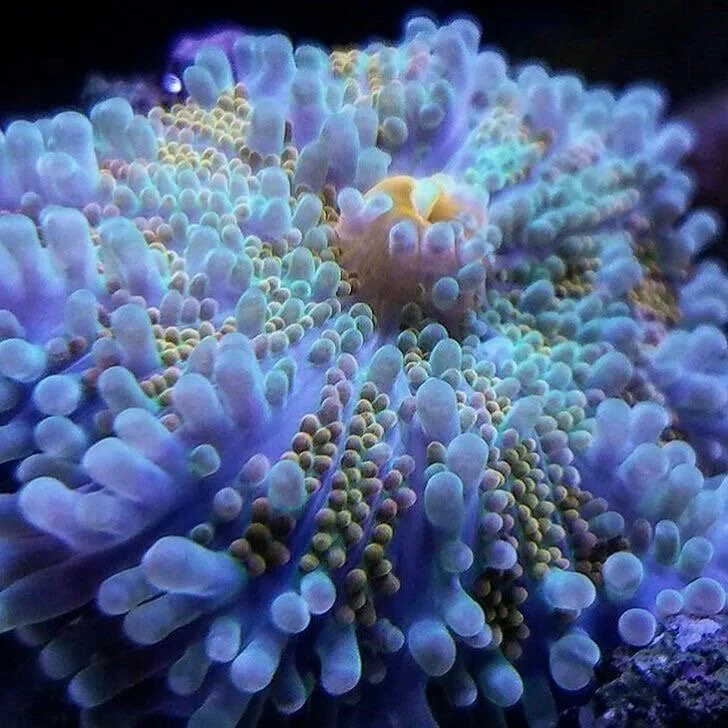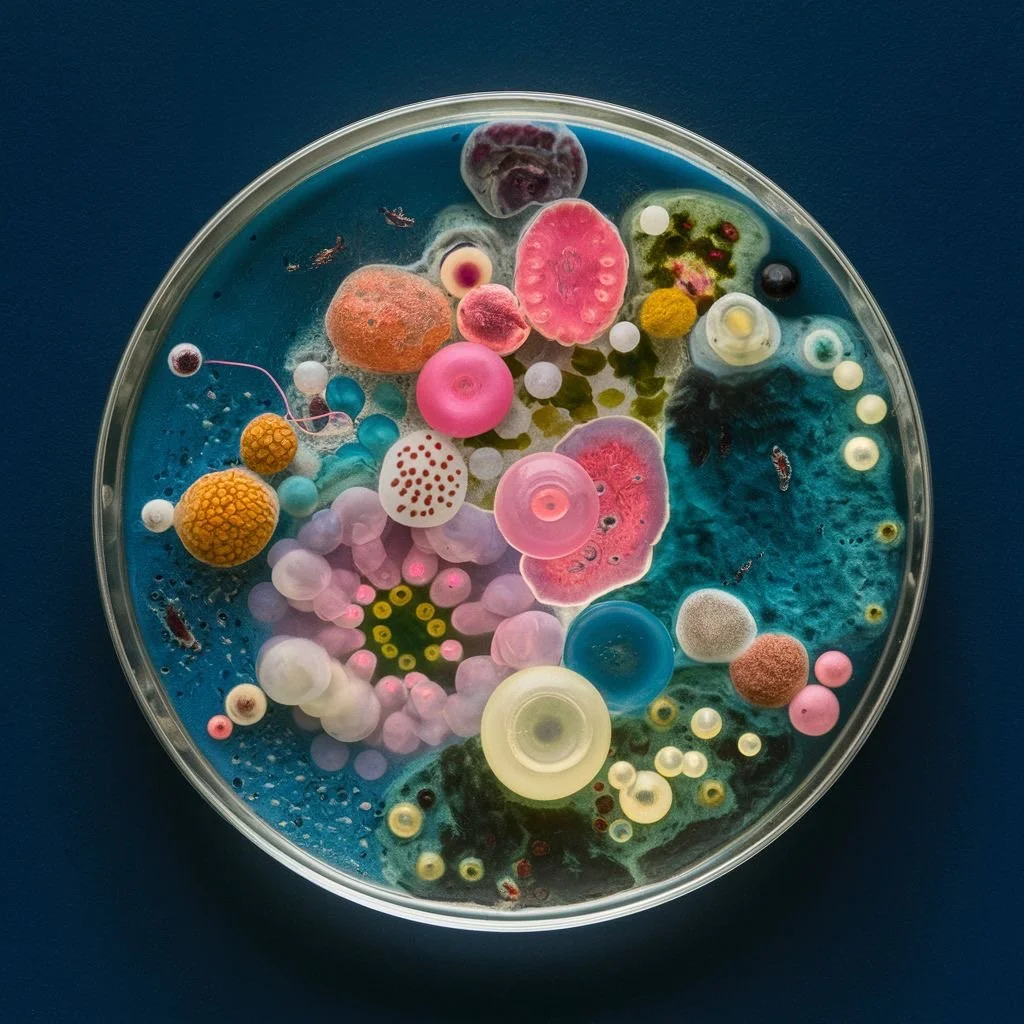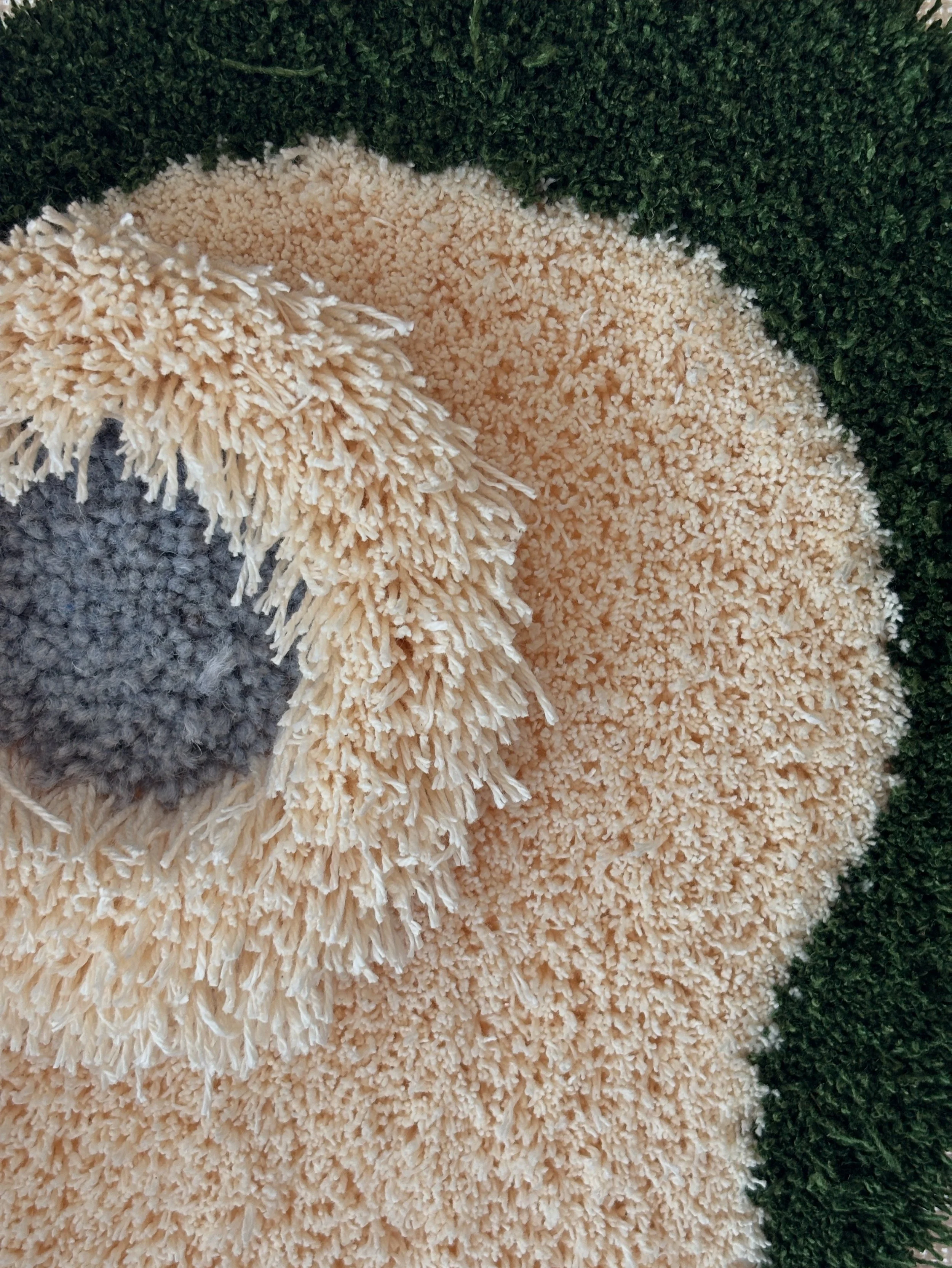The Invisible Nature: How Bacteria and Fungi Inspire My Tufted Work
When I tell people I get inspired by things like bacteria and fungi, I usually get a bit of a look. Fair enough. We're so used to finding beauty in flowers, landscapes, or fashion collections — but for me, beauty often lives in the unexpected. In the microscopic world. In things we can't even see with the naked eye.
🍄 Texture from Nature
Bacteria, fungi, small deep sea creatures— they all have something that draws me in: structures that repeat in their own free, organic way, shapes that grow without rules, colors formed by chemistry, time, and total randomness. They’re full of movement and texture, and honestly, I could stare at them forever.
I’m not trying to perfectly recreate a mold colony (thankfully), but I am trying to capture that feeling of growth, of quiet expansion, of natural logic that doesn’t follow straight lines. Turning that kind of beautiful chaos into composition — that’s what I love.
🔬 Micro world = mega inspiration
Sometimes I go looking for microscope images on purpose. Other times, inspiration just hits me during a walk — a mushroom on a tree, lichen on a stone, even the structure of a rotting leaf. Tiny details most people overlook, but to me, they build a whole visual language.
Instead of clean lines and control, I work with organic shapes, imperfect repetition, and yarns that have their own quirks — leftovers, scraps, stray fibers. They fit the subject. Nothing’s perfect, but everything grows.
🧵 Tufting as translation
Tufting lets me express all of that layering and movement in a really physical way. I use loops that stick out like spores, colors that melt into each other like a petri dish experiment. I play with high and low pile, soft and hard contrasts — so the work isn’t just visual, it’s tactile. You want to touch it, feel it, pause for a moment.
💭 Why it matters
This isn’t some gimmick or weird concept to me — it’s just a way to offer a different kind of beauty. There’s so much poetry in the overlooked, the discarded, the tiny things growing in the background. And by turning that into something large, colorful, and touchable, I’m giving it a stage.
And maybe, just maybe, it makes you look a little differently at what crawls, grows, or decays next time you’re outside.


